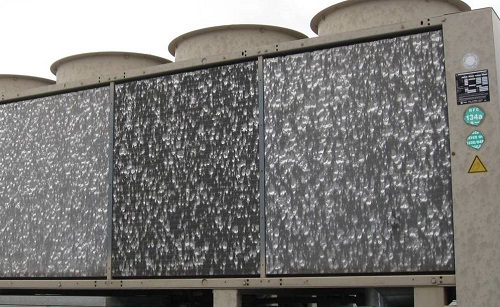
April 9, 2018 in Advisory Notes
Managing Resilient Buildings - Preparing for Dust Storm...
It is important particularly during the drier months in Australia to plan for extreme weather events such as dust storms.
April 10, 2015
As the effects of climate change become more evident, it is apparent that facilities and their operation need to adapt. Built environments must become more resilient and whilst designers are increasingly focused on this issue, facility management also has a significant role in identifying and implementing the appropriate changes to existing building infrastructure and management practices.

Increased incidence of extreme storm events, rising temperatures, estuarine flooding, sea level rise and storm surges, heat waves and even smoke impact from bushfires, are some of the obvious direct impacts. These events can also lead to the increased likelihood of serious disruptions in the provision of energy, water, telecommunications, waste and transport utilities further affecting buildings and their occupants.
To produce improved facility resilience, an objective identification of the possible impacts and their likelihood, and subsequent impact to the facility and its operation, should be followed by the development of an appropriate plan for both enhancements to the building and its systems, and the establishment of business continuity plans for operation and management.
At the outset it is important to have a clear definition of the objectives of the exercise. The safety of the facility’s occupants is usually the prime concern followed by some level of ‘essential’ business continuity. Compliance with legal obligations is also a basic requirement.
Direct events can include the potential for storm damage and building leakage, localised flooding due to overwhelmed stormwater systems, extraordinary estuarine flooding or coastal storm surges and extended periods of extraordinary heat. In some facilities the impact of smoke from large bushfires or dust from extreme dust storms may be a concern.Events caused by failure of external infrastructure can include prolonged electrical power, gas, water and even sewage disruption; telecommunication failures may affect landline, mobile and data services. Transport failure whether the road system or public networks are also a consideration.
Scenario planning can be used to ascertain the possible impacts to the facility from the identified events, their likelihood, and the consequent assessment of risk.Judgement can be applied to determine the level of investment and preparation that may be prudent to address the perceived risk to the building, the business operations therein and the occupants.
For example, higher likelihood of extreme rain or hail events can increase the risk of localised flooding or building leakage; increasing incidence of high temperature days may compromise the building’s ability to maintain internal temperatures; prolonged electricity supply failure will deem buildings requiring mechanical ventilation to be non-habitable.
What can be done to modify the building and its systems to reduce the impact of events deemed to be tangible?Bunding and stormwater diversion works to protect infrastructure such as substations and switchboards; review of and modification to guttering; protection of storm-exposed rooftop plant; review of mechanical plant capacity and its controls to address consecutive high temperature days; alternative ventilation strategies where possible.
The management of the facility, in pre-empting and preparing for an event, and during and immediately after an event, is critical.Pre-establishing, aligning and communicating situation management and response protocols to stakeholders, including facility occupants and service providers, agreeing event and post-event communications arrangements, and immediate physical response plans and post-event plans are all important elements in successfully achieving a more resilient facility.
Remembering also that for this planning to remain effective, it will require regular review and communication to ensure arrangements remain in place and up-to-date.

April 9, 2018 in Advisory Notes
It is important particularly during the drier months in Australia to plan for extreme weather events such as dust storms.

November 21, 2017 in Advisory Notes
Heat waves are a regular extreme weather event in Australia. With respect to building air conditioning systems this is commonly thought of as two or m...